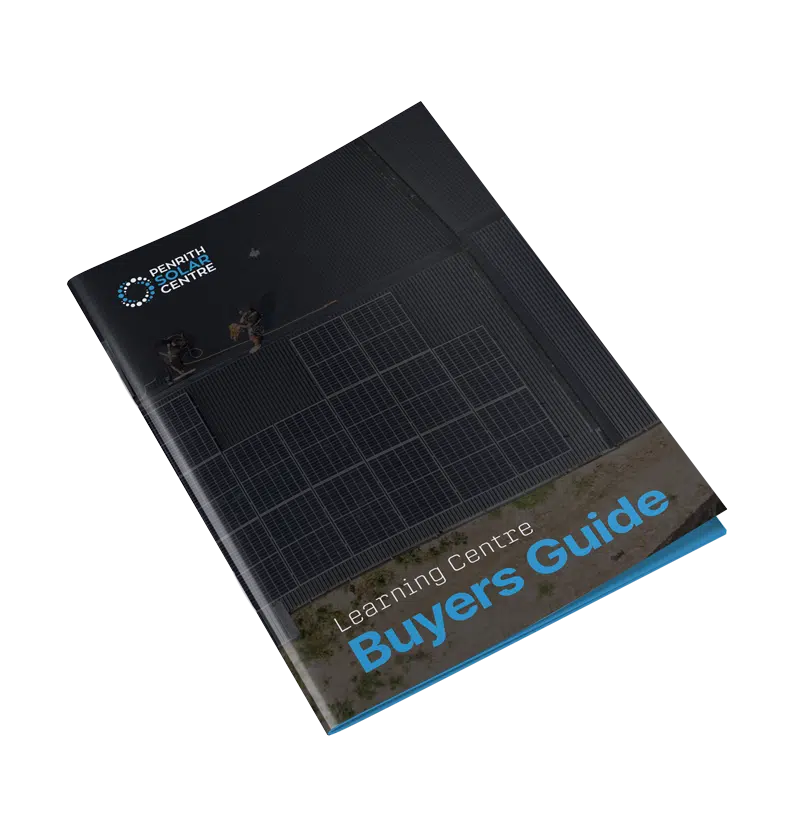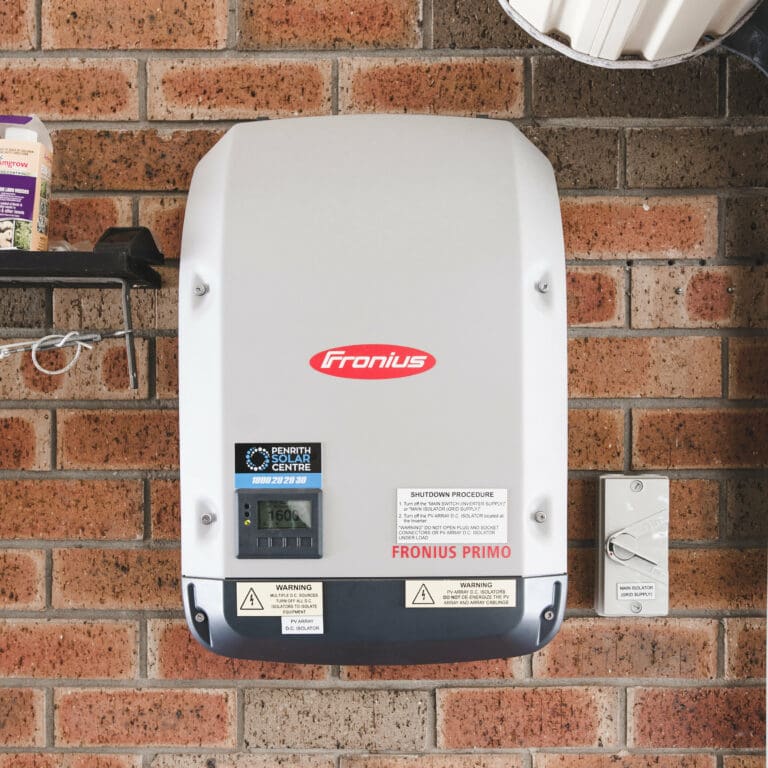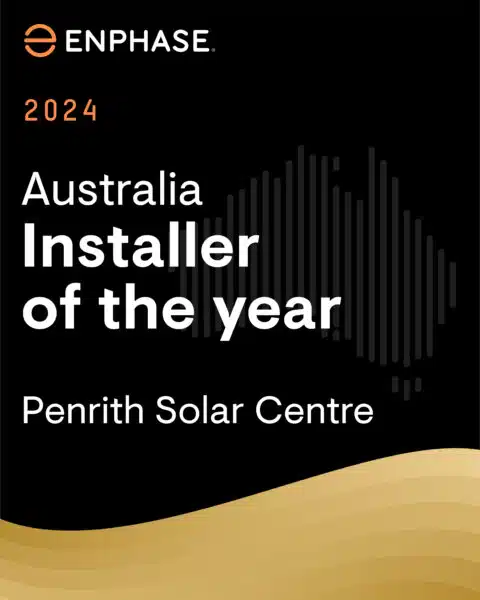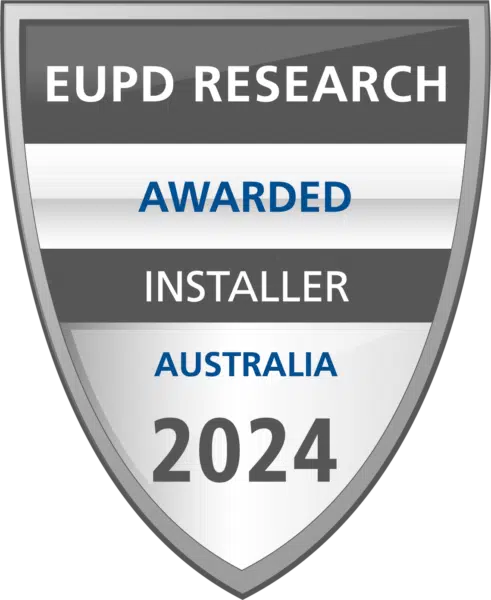
Most homeowners shopping for solar are unaware of the risks associated with arc faults. The phrase itself is a little weird and doesn’t really describe what is to the average customer.
There are character arcs, the Arc of the Covenant, and the different types of arcs you’ll find with a protractor. None of those seem to be a threat to solar systems nationwide.
What is an arc fault?
At Penrith Solar Centre, we’re experienced in installing and maintaining solar systems. We are well-versed in the potential hazards associated with it. We’ve seen the effects of arc faults and understand the importance of proper system design (and the importance of choosing a safe solar system).
In this article, we will delve into the causes of arc faults, how they affect your solar system, and the steps you can take to prevent them.
You’ll learn the following:
- What is an Arc Fault in Solar Systems?
- How Do MC4 Solar Connectors Keep My System Safe?
- Microinverters Are a Safety Solution
By the end of this article, you will have a clear understanding of how to invest in a solar system that will ensure the safety of your home.
What is an Arc Fault in Solar Systems?
An arc fault occurs when electricity discharges powerfully between two or more conductors when there’s space between them. This discharge produces heat that can degrade the wire’s insulation and start an electrical fire. Things like loose wires, gaps, or moisture can cause arc faults.
When an arc fault jumps from one conductor to another, it has the potential to start an electrical fire in solar systems.
There are two main types of solar systems and they have different types of electrical architecture. String inverter solar systems send direct current (DC) power to an inverter on the side of the house to convert it to AC power. It’s a system with DC architecture. In an Enphase microinverter system, the DC power is converted to AC power at the panel before sending it down tot he house. This is a system with AC architecture.
The arc faults that happen in a system with DC power are typically more dangerous. Higher voltage leads to bigger arcs (which are kind of like sparks), which have the potential to catch fire more easily. Lower-voltage AC power systems don’t have this issue because they can automatically shutoff when an arc is detected.
Take a look at the following video. AC arc faults self-extinguish before they cause a fire.
As you can see, the high voltage DC power created a hot, sustained arc that could easily start a fire.
Even a minor equipment malfunction, like a frayed cable or a loose electrical connection, can trigger a DC arc fault, potentially causing a fire.
The AC arc fault, on the other hand, only made a brief, small arc that extinguished itself quickly. This difference is crucial for safety.
DC arc faults can reach temperatures of up to 1,085°C. They can easily melt materials like glass, copper, and aluminium.
AC solar systems reduce the risk of arc fires because they have a different electrical architecture. The technology is different.
The following video makes a pretty good argument for the importance of rapid shutdown in a solar system. An Amazon building caught fire and firefighters couldn’t shut down the DC system.
The fire grew because they couldn’t switch off the power from the solar panels. The panels just kept producing power and sending it to the inverter. This shows the need for safer systems. Microinverters would have made a big difference. They have a feature called “rapid shutdown,” making firefighting safer.
The video also mentioned (repeatedly) how crucial it is to get a competent solar installer. It’s about safety, not just cost. We need to focus on preventing fires and protecting people.
It’s in your best interest to know how different solar systems work before you invest in one. Educating everyone about these differences is important. It helps prevent fires and protect lives and property.
If you’re interested in learning more about the rapid shutdown feature in solar systems, you might want to check out the following article titled, How Important is Rapid Shutdown in a High Voltage DC Solar System?
MC4 Solar Connectors
MC4 connectors are single-contact, weatherproof connectors. They snap together with a locking mechanism, which ensures a secure and stable connection. They are designed for use with solar panels and other solar equipment. The “MC” stands for “multi-contact,” and the “4” refers to the 4 mm contact pin.

MC4 connectors are essential components in solar installations because they ensure safe, reliable, and efficient connections between solar panels and other system components.
MC4 connectors are found across almost every solar system. Microinverters have MC4 connectors, string inverters have MC4 connectors, SolarEdge systems have MC4 connectors.
In an Enphase system, there are zero man-made MC4 crimps on the roof. A man-made MC4 crimp refers to the manual process of attaching an MC4 connector to a cable in on-site.
This is the meat of the issue: eliminating human error. What fails in solar installations is the installer’s hand crimping a cable to an MC4 connector.
Microinverters already have the MC4 in them, and panels have MC4 plugs on them, the MC4 crimp on a panel is already done by a machine at a factory, not a human. The machine will manufacture it perfectly every time. There’s no human error. So, all our guys need to do on site is plug the panel into the microinverter.
MC4 connectors eliminate one more possibility of human error in solar installations.
Here are a few more reasons why MC4 connectors are important in a solar system installation:
Ease of Installation:
MC4 connectors are easy to install and connect. They have a plug-and-play design, which speeds up the installation process and reduces labour costs. The wires are crimped in a factory and assembled off-site.
It’s the plug-and-play design that makes them so wonderfully safe in solar installations. When those two ends snap together, you can hear it.
By providing a stable and secure connection, MC4 connectors keep your system safe when used correctly.
Safety:
MC4 connectors are designed to handle high voltages and currents safely. They help prevent accidental disconnections and reduce the risk of electric shock.
MC4 plugs on a DC string system are factory crimped on panels. These are not the ones that fail. They were not crimped by humans.
On a string system, the panel plugs into the panel next to it and the voltage is cumulative. So, if you’ve got 50-volt panels, the first one is 50V, then the next one makes it 100V total, then 150V, then 200V, 250V, and it keeps going all the way up to 1000V.

The real problem with human error in a string system installation lies at the end of the string. The final crimp is man-made. An installer is high up on the roof with a pair of pliers and some MC4 tools. The installer must strip the cable perfectly, twist it perfectly, do the crimp perfectly, attach the MC4 plug to the crimp perfectly, and then plug it into the cable.
All MC4 failures happen at the end of the string. Because that’s where the man-made crimp is.
MC4 plugs are in every single system, but the fewer of them that your preferred solar installer crimps on the roof, the better.
Reliability:
These connectors are built to withstand harsh weather conditions, including rain, snow, and high temperatures. This ensures that the solar system remains operational in various environmental conditions.
Compatibility:
MC4 connectors are widely used in the solar industry, making them compatible with most solar panels and inverters. This standardisation simplifies the design and installation of solar systems. Some installers believe that MC4 connectors are interchangeable. They are not.
Mixing connectors from different manufacturers is unsafe and illegal. They must be UL-rated for safety. Improper connections can cause arcs, leading to potential fires.
Microinverters have MC4 connections integrated into their design. There’s no need for any adapter cables.
The fewer connections you have, the less human error exists in your system. The less human error, the less chance of an arc fault. Fewer arc faults mean fewer fires.
If you’re interested in learning a bit more about how installation craftsmanship affects the efficiency of your solar system, you might want to check out the following article titled, In-house Installers vs. Subcontractors: Which is Better?
Microinverters as a Safety Solution
By now, you’re sure to understand how biased we are on this topic. It’s why we offer the option between AC architecture or DC architecture in your system.
Arc faults are a major concern in solar systems. The wiring in DC systems runs from the solar panels on the roof down to the inverters. This makes them difficult to shut down in an emergency, increasing the risk of a sustained fire.
There are still 600 – 1,000 volts in the cable coming down from the roof.
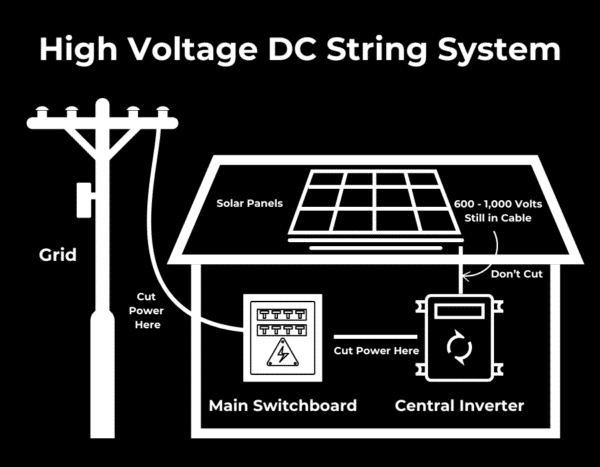
Unlike string inverters, which convert DC to AC at a central point, microinverters are installed under each solar panel. The high voltage DC power is converted to AC power immediately.
The 600 – 1,000 volts that firefighters worry about in the cables of a string solar system are eliminated in a system with AC architecture (microinverters).
If you’re interested in learning more about the other advantages of microinverters, you might want to check out the following article titled, Myths & Misconceptions About Solar Microinverters.
Parting Thoughts from Jake Warner, Managing Director of Penrith Solar Centre

All DC architecture is susceptible to arc faults. It’s one of the biggest risks when installing solar because this causes fires. Microinverters eliminate any risk of an arc fault.
There are string inverter manufacturers such as Fronius and Sungrow that are integrating arc fault protection into their inverters now. They’re saying that they can detect an arc and turn the inverter off.
That’s all well and good if the arc is just localised to one of the polarities of the cable coming from the roof to the ground. If the arc was on the positive or the negative, then it would be fine.
But if that arc has already caused a fire on the roof and caused a DC short, that arc fault protection is absolutely useless. The fire (and the DC power that’s fuelling the fire) will just keep on going until the sun goes down.
So, it’s all well and good to say that arc fault detectors will eliminate some fires, and yes, that is true, it will eliminate some fires. But if a rat or a rodent or possum, which we very commonly see, chews through both conductors of your solar system, or your solar system shorts out against metal, you know, metal in your roof or like a Colourbond roof, then arc fault protection is basically useless.
It’s great that string inverters are acknowledging that there is a problem there, but the solution is not good enough.
Conclusion: Arc Fires and Solar Equipment
Arc fires in solar systems are a significant risk. High-voltage DC systems can create arc faults, leading to fires. These systems operate with high voltage, which can cause faults in wiring and connections.
Microinverters eliminate these risks. They have rapid shutdown and reduce the likelihood of arc faults.
At Penrith Solar Centre, we want you to understand the differences in solar architecture. DC systems pose significant risks during fires. AC systems with microinverters offer better safety. Educating customers and installers about these differences is crucial. We will never reach Net Zero by 2050 if we are all this flammable.
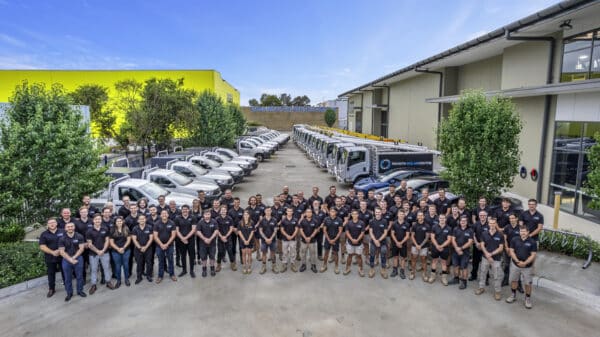
If you’re interested in reading up on safety in solar installations, you might want to check out the following article titled, Solar Safety: Microinverters vs. String Inverters.
